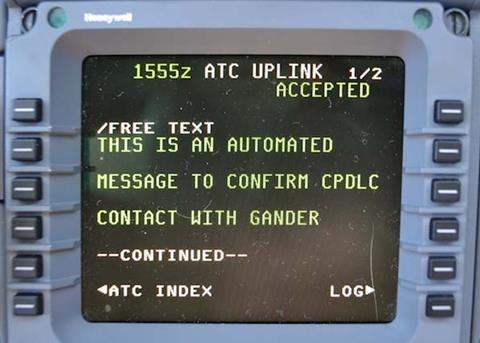European and US regulators have set out proposals to modernise and harmonise aviation data connectivity, which currently relies on limited-bandwidth connections.
Air-ground data exchanges support air traffic management and airline operations, but the European Union Aviation Safety Agency says technologies such as VHF datalink and first-generation satellite communications are “fragmented” and “not always interoperable”.
Connectivity demands are rising owing to higher-capacity air traffic services datalink and the greater use by modern aircraft of operational and maintenance data transmission.
“There is a need to look to the future and bring the system up to modern-day standards making use of technologies such as broadband,” it states.
EASA and the US FAA have co-operated with Airbus and Boeing on a proposal to modernise aviation data communication by 2035, and to maximise use of scarce spectrum resource.
FAA acting associate administrator for aviation safety David Boulter says data and connectivity are “driving aerospace advances”.

The joint task force analysed long-term connectivity needs for various domains – air traffic management, airline operations, aeronautical information services, and autonomy – and the status of potential solutions.
It is aiming for B2 over Internet Protocol Suite for air traffic management connectivity, making use of VDL2 datalink and satcom performance class B for future physical links.
Task force members have selected their recommended options based on safety, capacity, spectral and economic efficiency, interoperability and future-proof technology.
“The recommended solutions, along with the proposed transition roadmap, are defined to limit the overall investment costs…and to optimise the share of complexity between air and ground, while providing the required performance,” says the task force proposal.
It also takes into account the need to support multiple protocols and aircraft configurations during transition.
“For the first time, we have a common vision from all four organisations in the task force, to establish modern air-ground communications that will meet tomorrow’s requirements,” says EASA executive director Patrick Ky. “This is the first step toward achieving this, and a major one.”













































